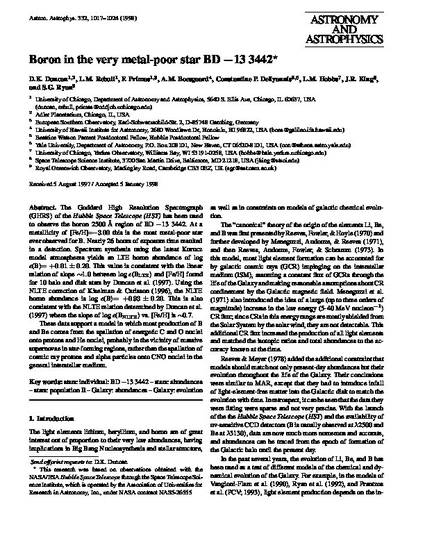
The Goddard High Resolution Spectrograph (GHRS) of the Hubble Space Telescope (HST) has been used to observe the boron 2500 A region of BD-13 3442. At a metallicity of [Fe/H]=-3.00, this is the most metal-poor star ever observed for B. Nearly 26 hours of exposure time resulted in a detection. Spectrum synthesis using the latest Kurucz model atmospheres yields an LTE boron abundance of log e(B)=0.01 +/- 0.20. This value is consistent with the linear relation of slope ~1.0 between log e(B[LTE]) and [Fe/H] found for 10 halo and disk stars by Duncan et al. 1997. Using the NLTE correction of Kiselman and Carlsson (1996), the NLTE boron abundance is log e(B)=0.93 +/- 0.20. This is also consistent with the NLTE relation determined by Duncan et al. (1997) where the slope of log e(B[NLTE]) vs. [Fe/H] is ~0.7. These data support a model in which most production of B and Be comes from the spallation of energetic C and O nuclei onto protons and He nuclei, probably in the vicinity of massive supernovae in star-forming regions, rather than the spallation of cosmic ray protons and alpha particles onto CNO nuclei in the general interstellar medium.

Published version found here: www.aanda.org